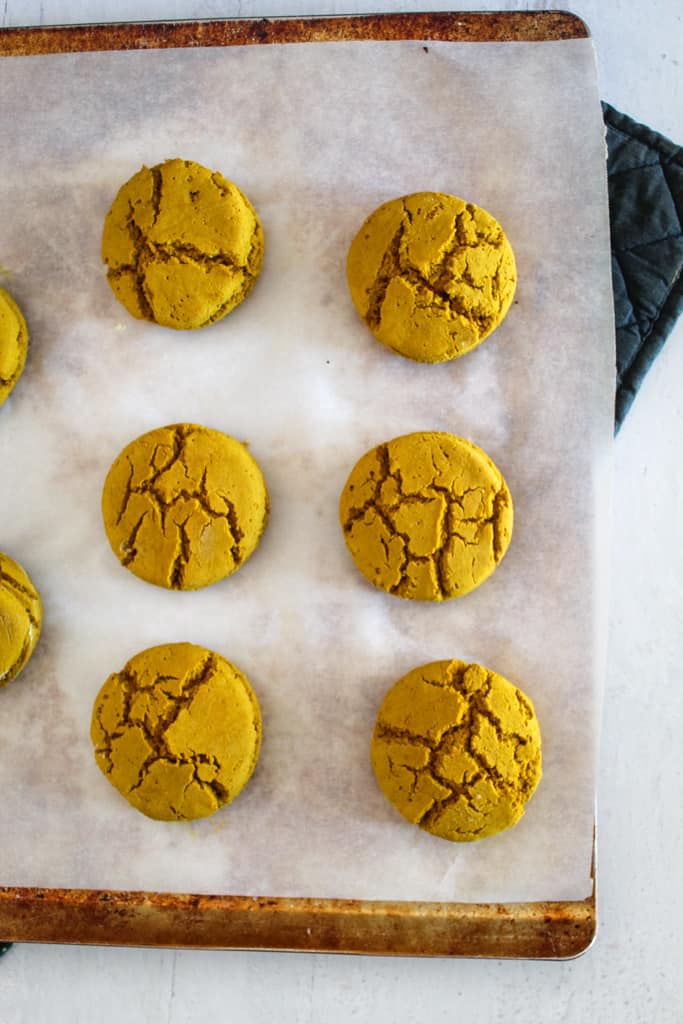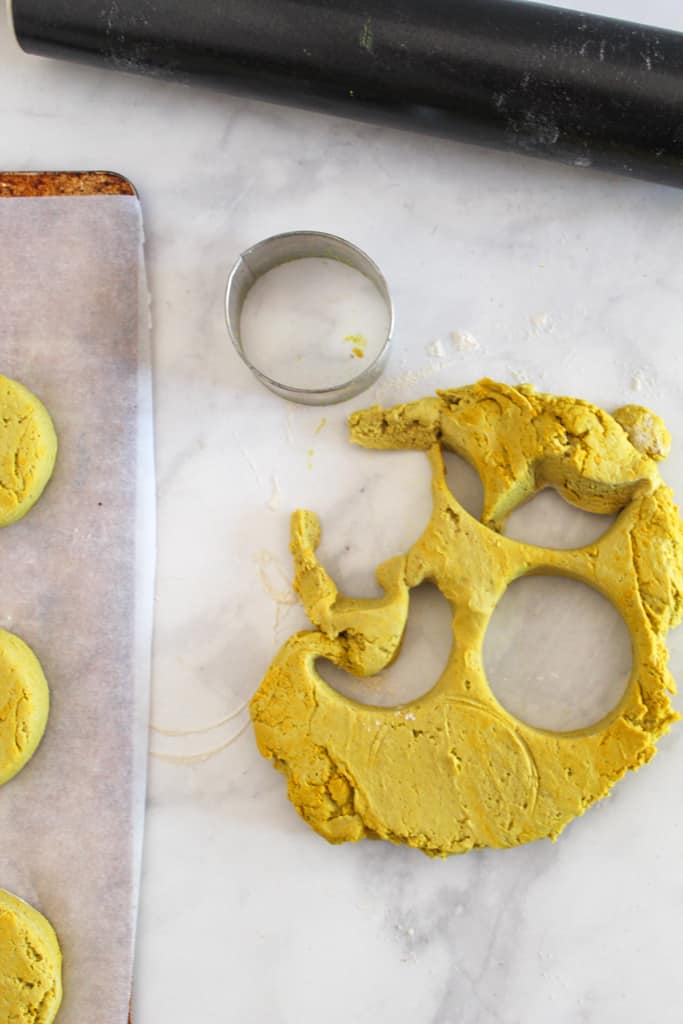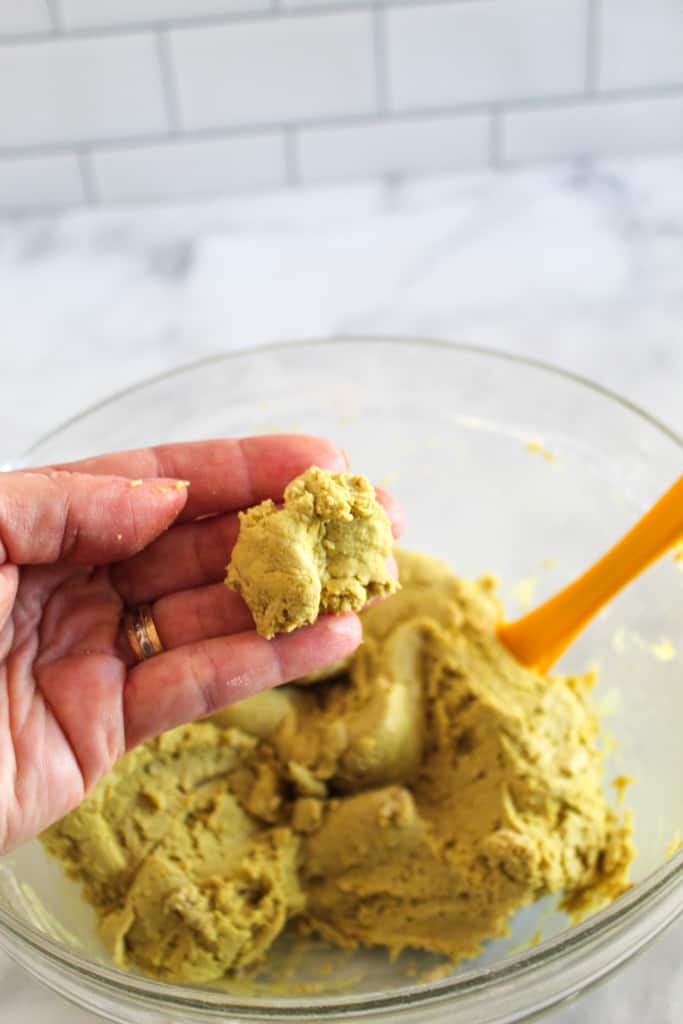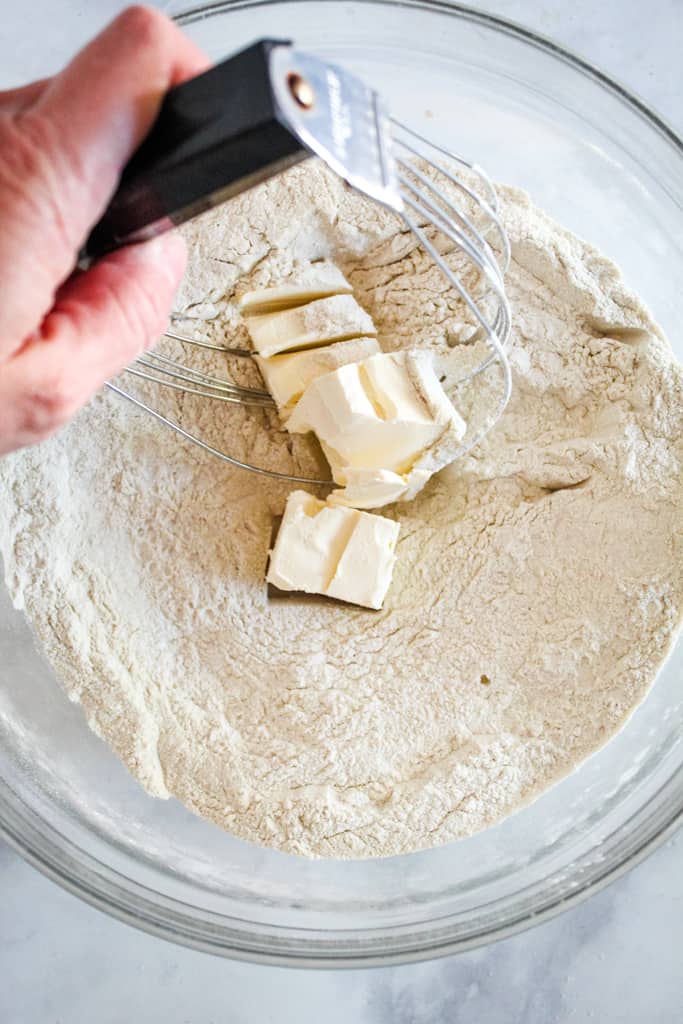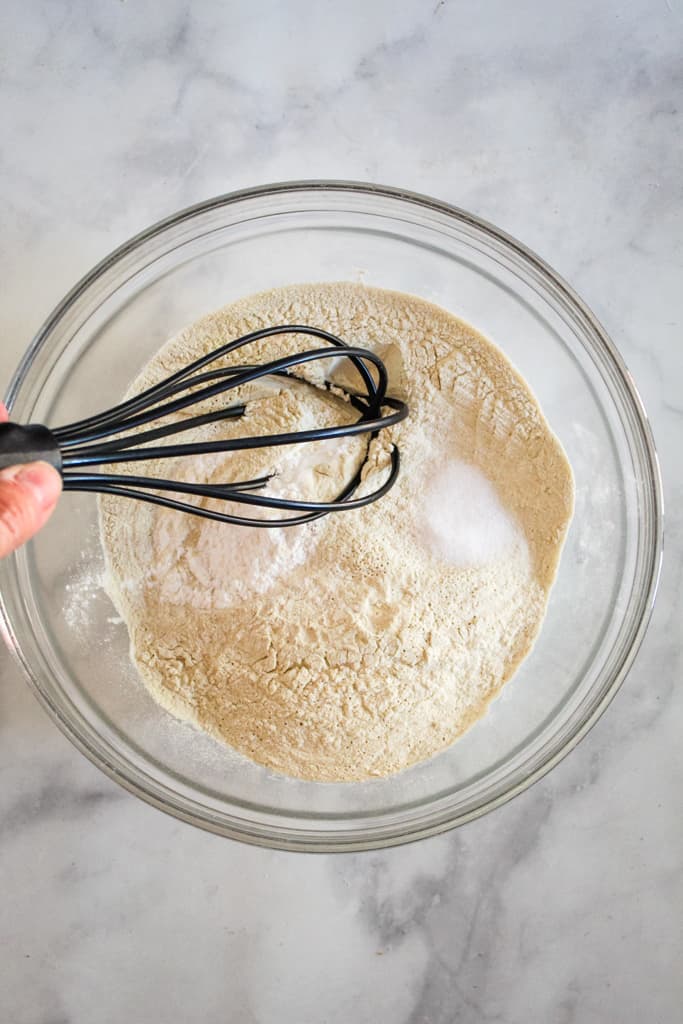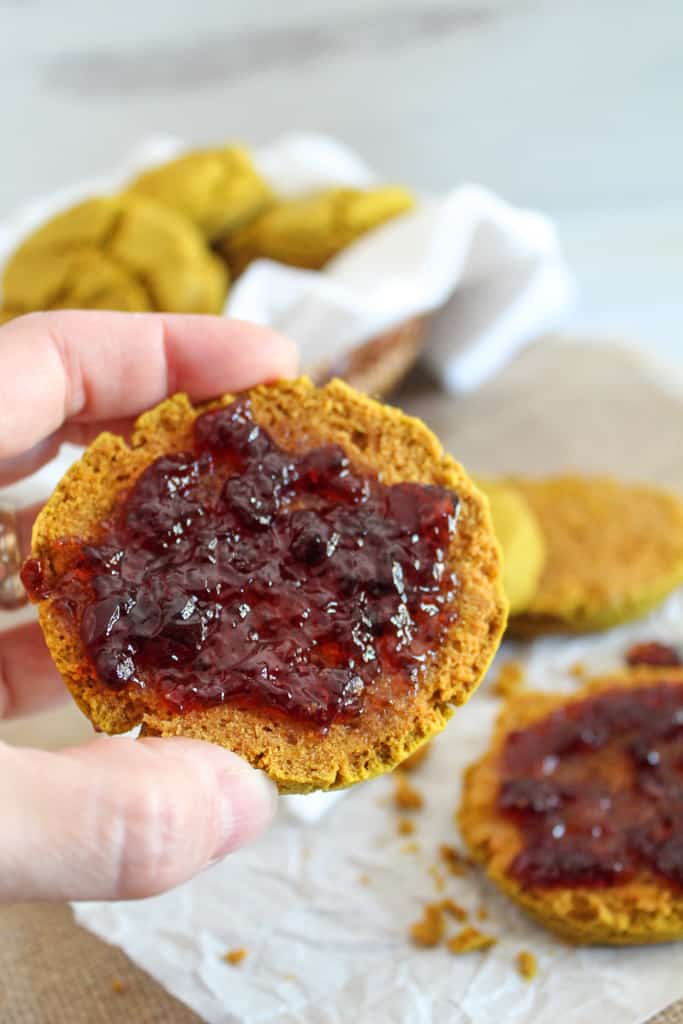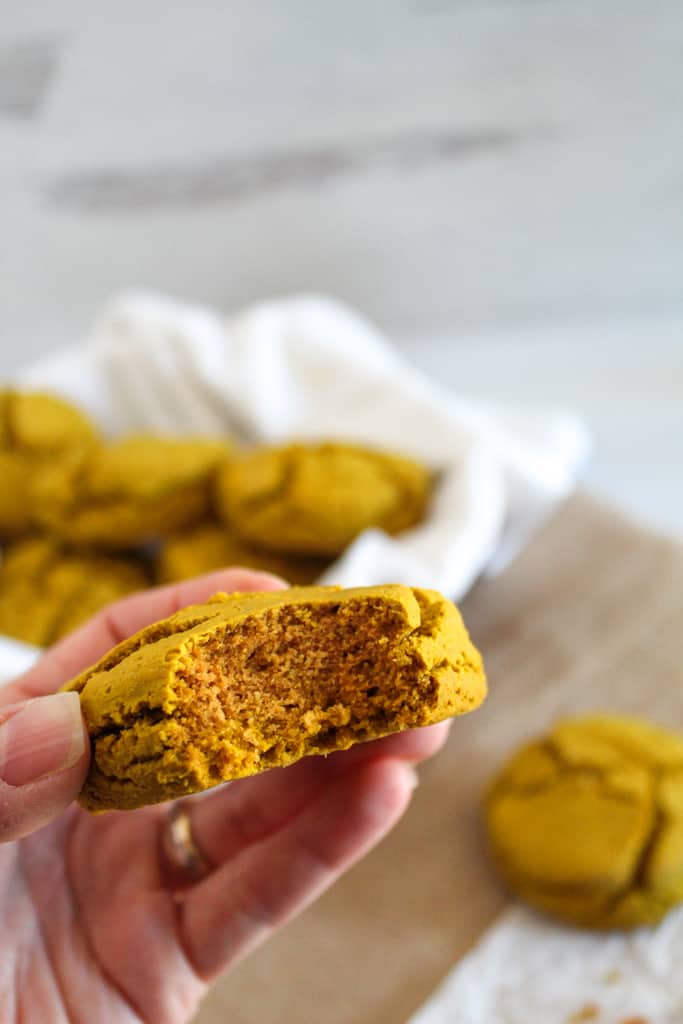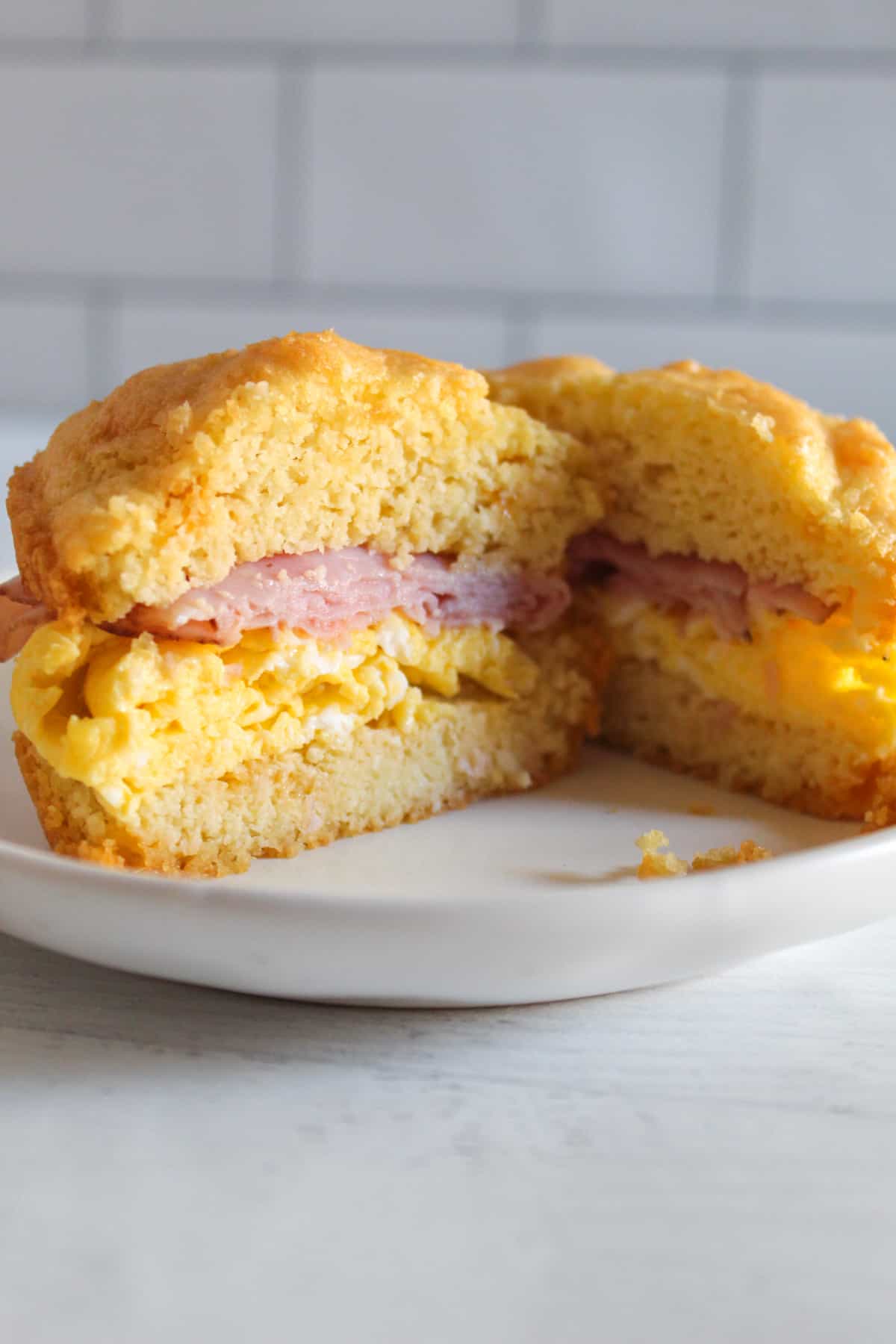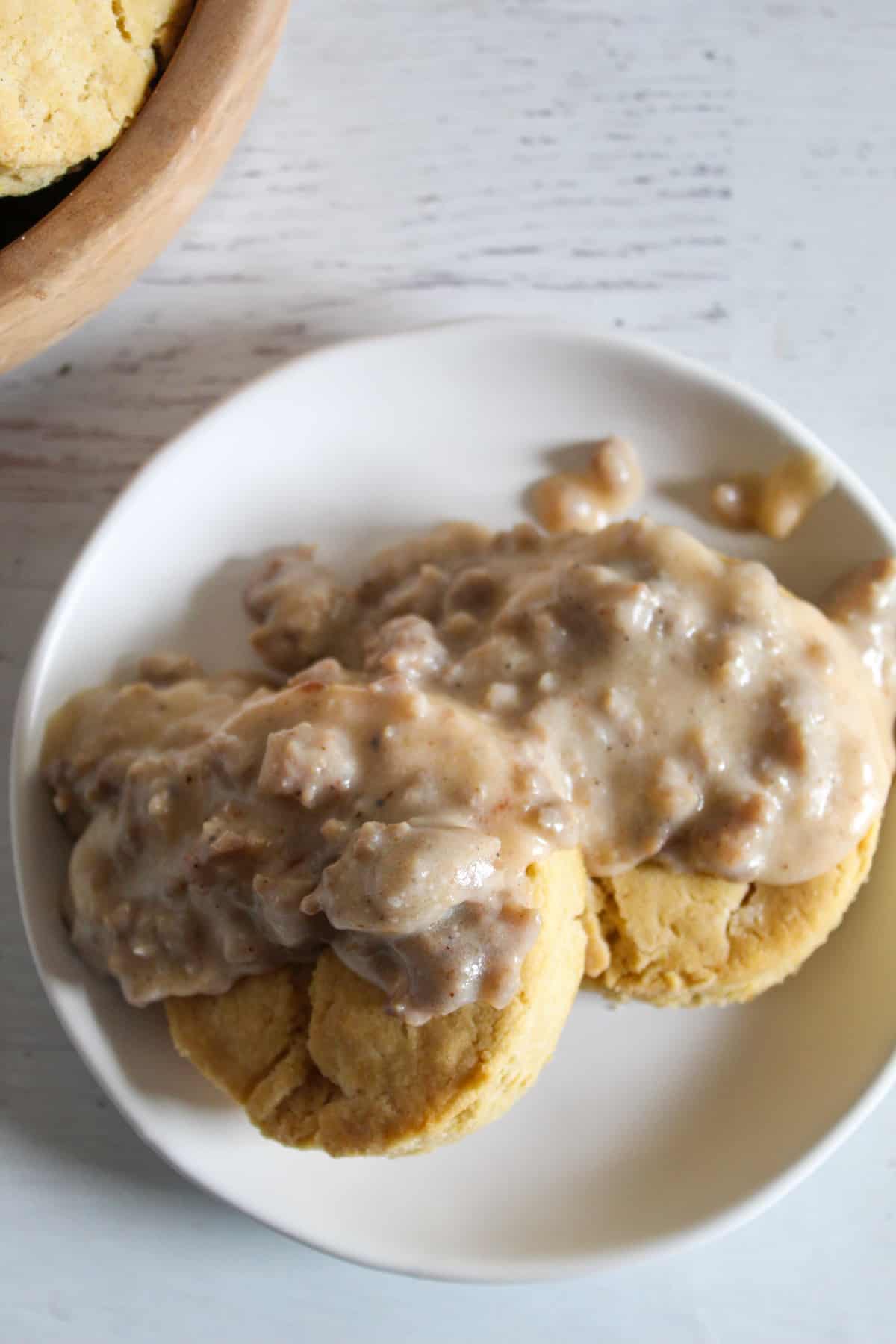Buckwheat Biscuits Recipe: Easy & Gluten Free
If you’re a fan of tender, light textured biscuits, you will absolutely love these buckwheat biscuits. They’re straight buckwheat flour too – no starches or other flours included. Plus they’ve got the added bonus of being gluten free and grain-free too.

Don’t let the cracked top fool you, these biscuits have a great, high rising texture, a nice interior that’s the ideal balance between pull-apart and firm and are just 8 ingredients! They are as good toasted as they are fresh. And if you like these regular gluten free biscuits and these almond biscuits, you’ll definitely love these too.
Table of Contents
I use buckwheat flour quite often in recipes. It’s a wonderful grain alternative that’s naturally gluten free and hearty enough to offer a nice consistency to baked goods without being too heavy. As with other flours, there is a flavor to buckwheat – the best way to describe it is a bit wheat-y, but with an earthy undertone. It’s wonderful in a variety of recipes, from pancakes to breads – keep in mind, whatever you’re baking, whether sweet or savory, using buckwheat flour will result in some of the best textured baked goods.
Buckwheat Biscuit Recipe at a Glance
From flavor to level of difficulty, this recipe is a true winner! It’s naturally gluten free and even grain free too (yes, buckwheat is actually a seed!). Besides that, this easy recipe is also:
- Simple to prep – there’s just 8 ingredients!
- Dairy free
- Vegan
- Easy to store
- And they’re still delicious even after they’ve been frozen
Ingredients & Substitutions
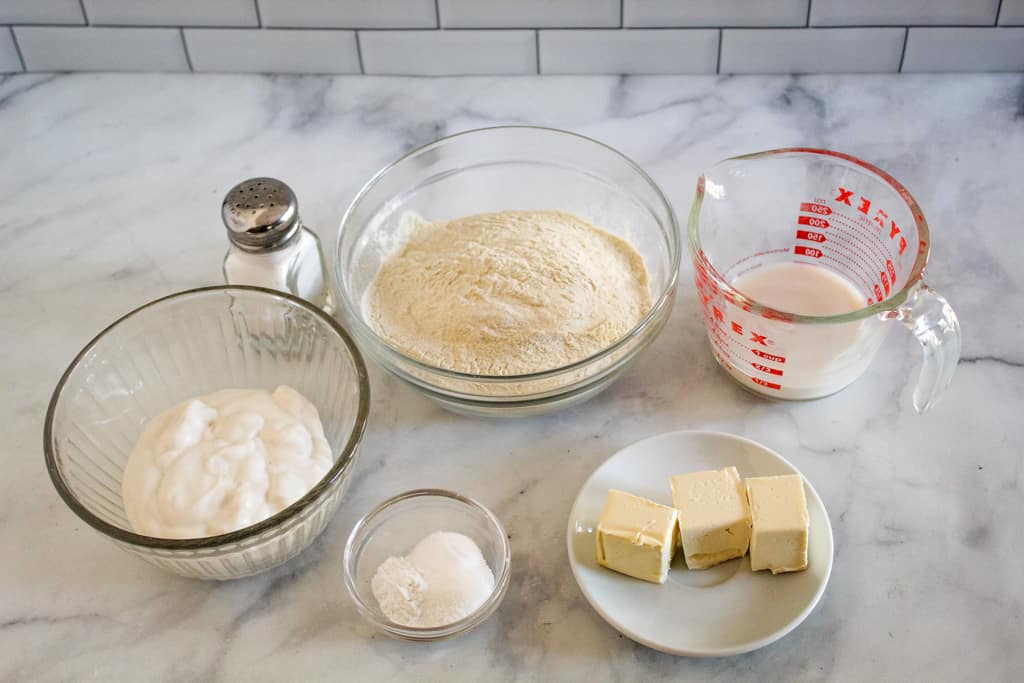
The simple ingredients list includes many ingredients you’ll likely have on hand. You’ll want to bring all ingredients (except butter and sour cream) to room temperature. And weigh the flour and sour cream so it’s the right amount.
- Light buckwheat flour – I recommend the variety and brand of buckwheat flour here. I would not recommend substituting the buckwheat flour but if you want another type of biscuit, check out these millet biscuits.
- Baking powder – Baking powder is an essential ingredient and cannot be substituted.
- Baking soda – Baking soda is also an essential ingredient and, like the baking powder, functions as a base for the sour cream to react and rise.
- Granulated sugar – The sugar is not enough to make the biscuits sweet. It can be substituted with coconut sugar or Swerve sweetener. Liquid sweeteners like honey or maple syrup are not recommended as they would negatively change the consistency of the dough.
- Salt – The salt may be cut down to 1/4 teaspoon salt if desired.
- Vegan butter – The Earth Balance brand of vegan butter was used in this recipe. Regular, unsalted butter may be substituted, but other substitutes like coconut oil have not been tested.
- Almond milk – Use unsweetened almond milk or another dairy free milk like oat milk or coconut milk may be used as well.
- Vegan sour cream – Vegan sour cream acts as an acid so the baking soda and baking powder will react and rise. Dairy free, cold buttermilk may be substituted for the sour cream.
Exact measurements and instructions for making these buckwheat flour biscuits are in the recipe card below.
How to Make Buckwheat Biscuits

Step One: Use a large bowl and mix the dry ingredients – flour, baking powder, baking soda, sugar and salt.
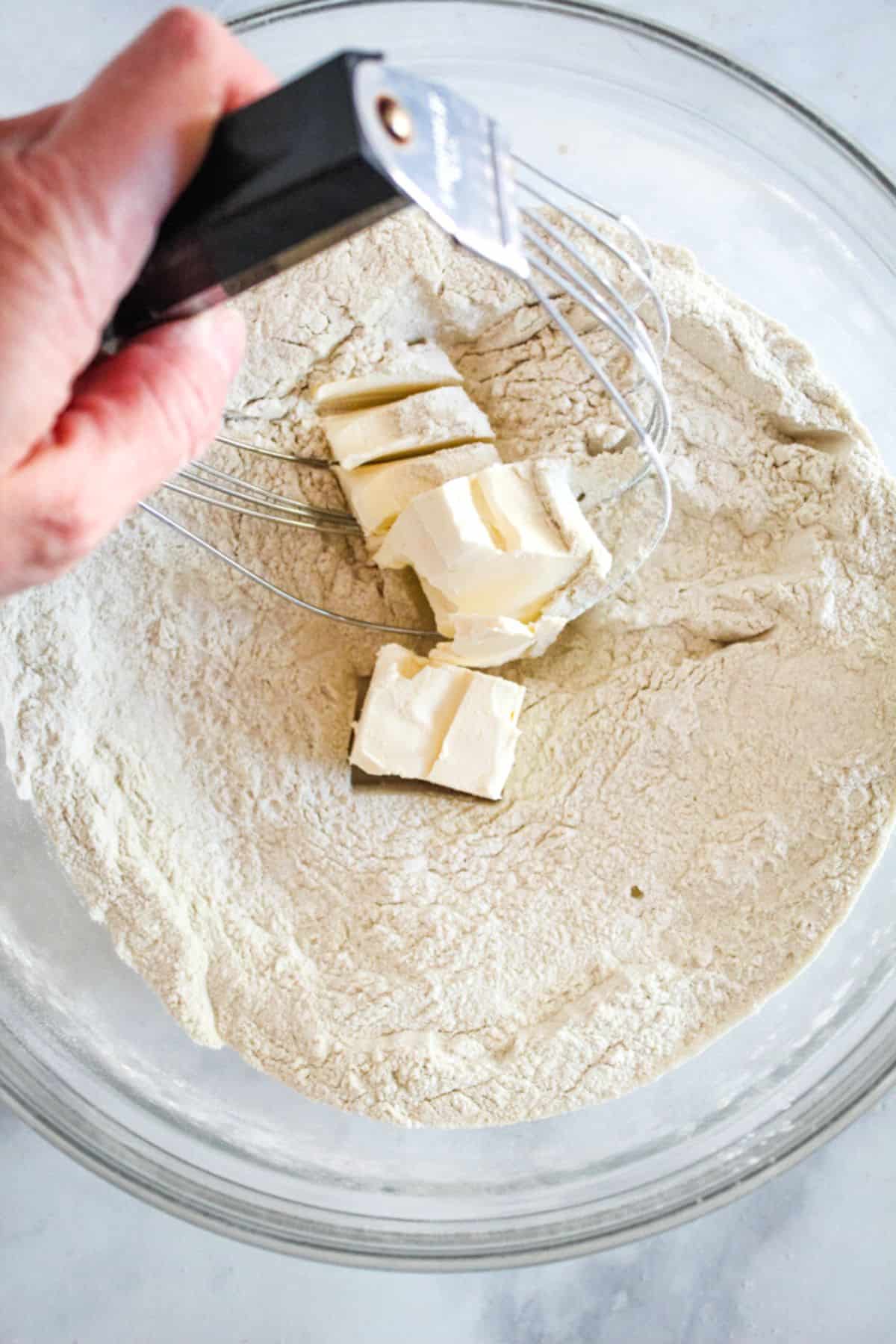
Step Two: Using a pastry blender, cut in the cold butter.
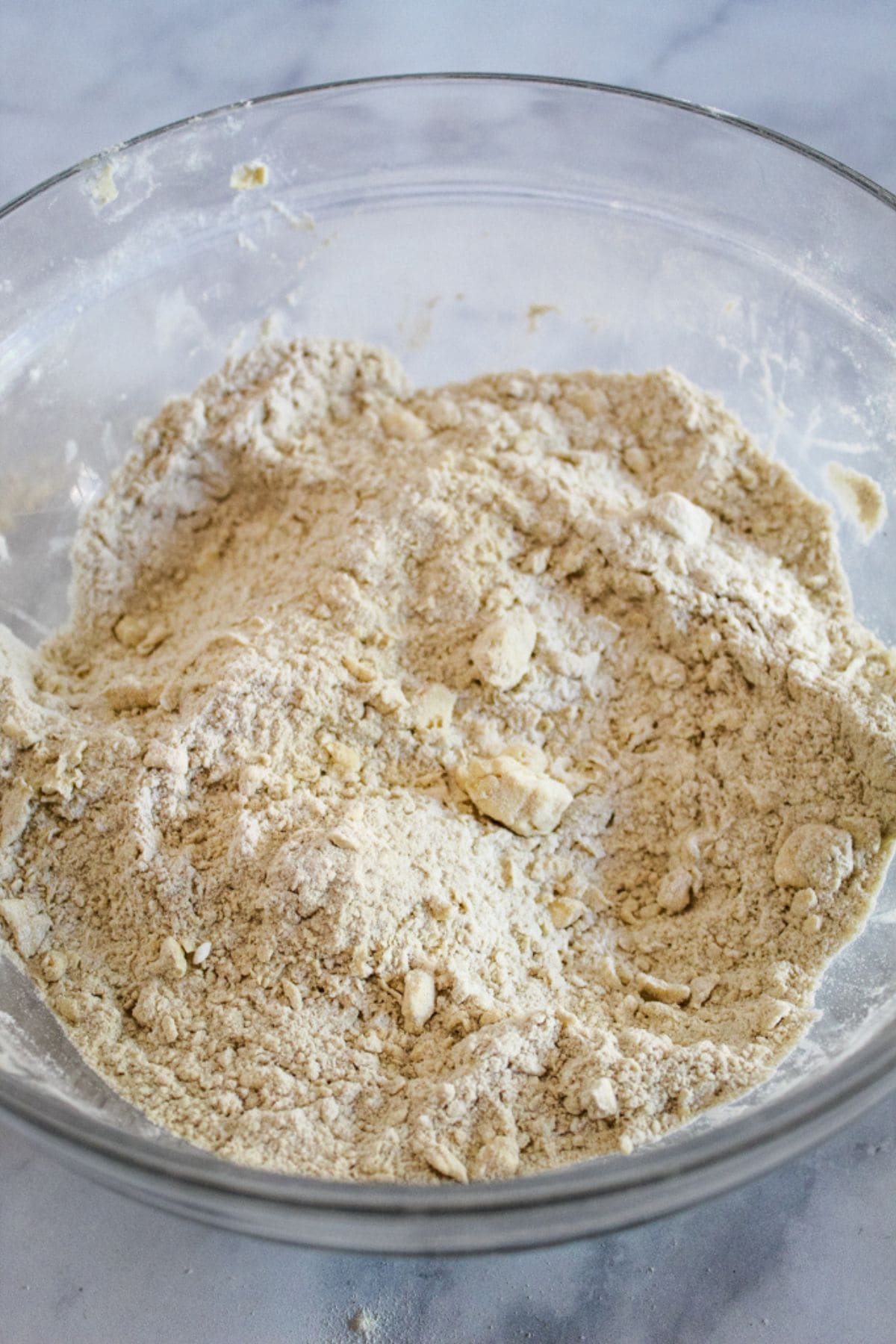
Step Three: The mixture should resemble coarse crumbs with small pieces of butter still visible.

Step Four: Mix in the wet ingredients – almond milk and sour cream – using a large spoon, until the dough forms. Cover the dough with plastic wrap and place in the refrigerator to chill for 30 minutes.
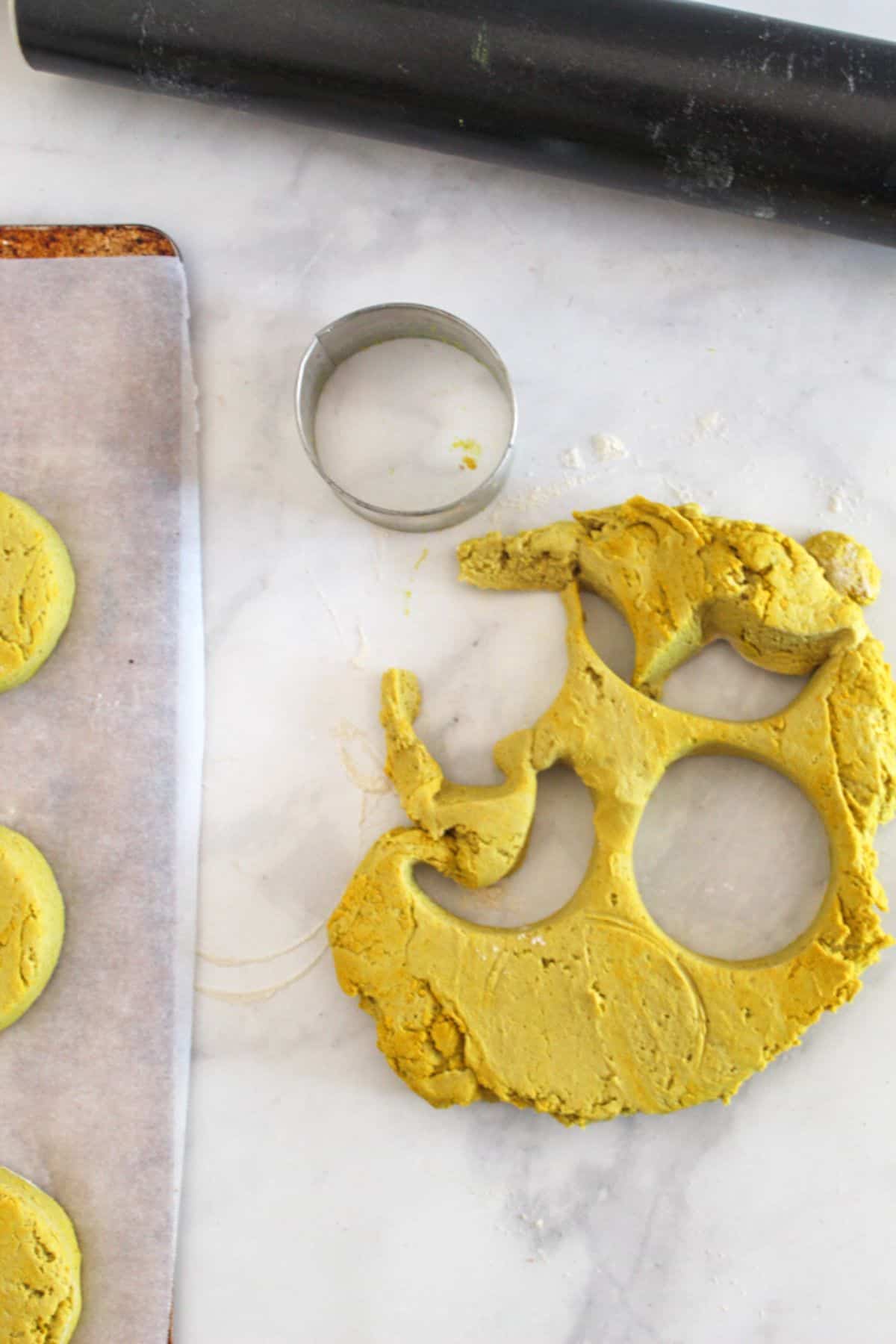
Step Five: Place chilled dough on a very lightly floured surface and roll to one inch thickness. Cut each biscuit using a 2-inch biscuit cutter.
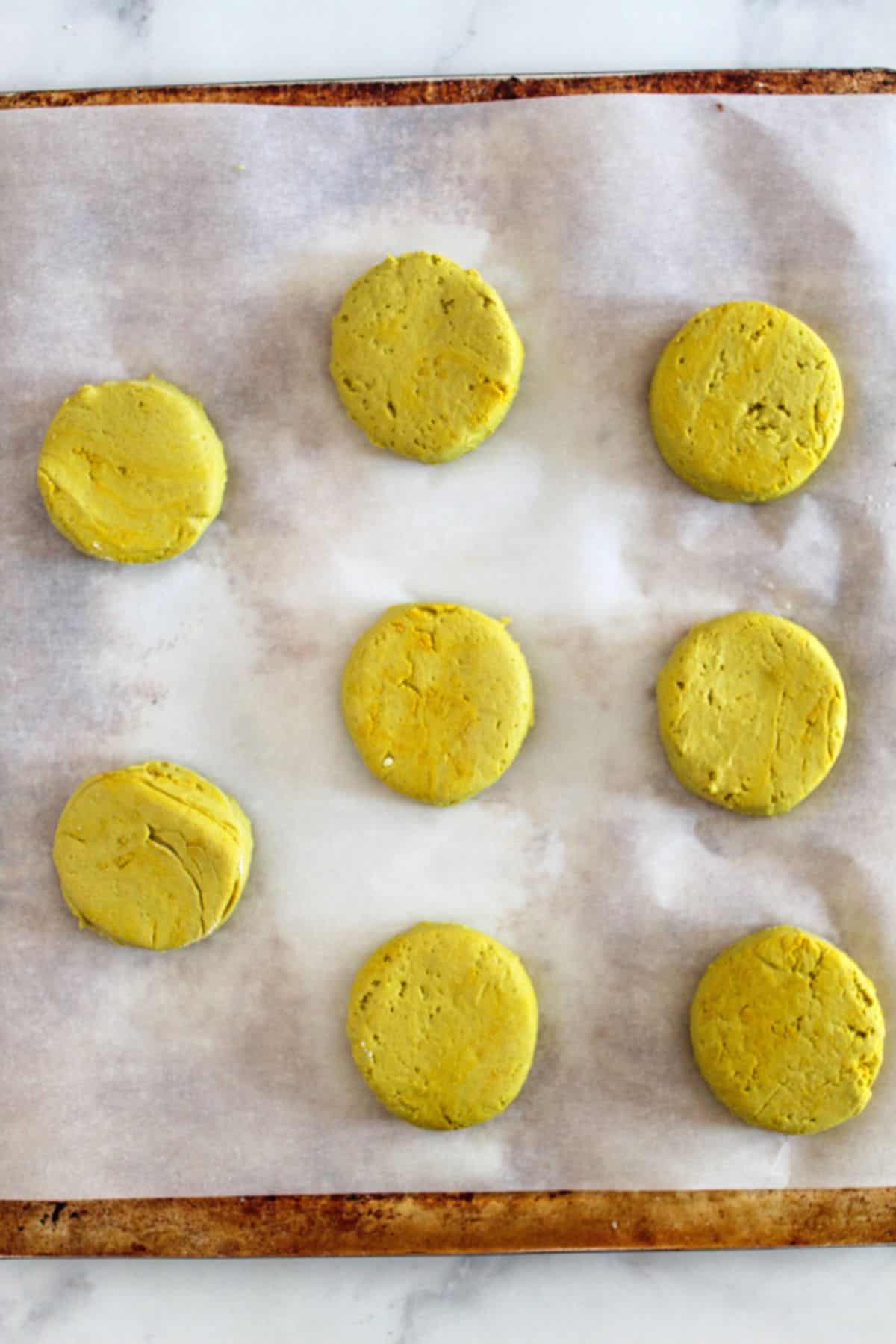
Step Six: Place biscuits on a prepared baking sheet lined with parchment paper.

Step Seven: Bake for 12-15 minutes or until the tops get a touch of golden brown. Cool on a wire rack for a few minutes before serving.
Storage & Make-Ahead
There are a few options for storing these biscuits, both unbaked and baked.
Unbaked biscuit dough: The biscuit dough can be made up to the point of forming the dough in the bowl. Instead of rolling it out, place the dough in plastic wrap and refrigerate it for up to 2 days. Remove from the refrigerator, let warm for 20 minutes, then roll and bake as directed.
Baked biscuits: Baked biscuits should be stored in an airtight container. They will last up to 2 days at room temperature. Any longer than that and they should be frozen for longer storage. Frozen biscuits can be defrosted for 30 seconds to 1 minute in the microwave.
Variations on Buckwheat Flour Biscuits
These biscuits can be made with different methods or in different shapes.
Mixing the dough: Instead of using a pastry cutter, you can use a food processor to cut in the butter. Then proceed as directed in the recipe with mixing in the almond milk and sour cream.
Drop biscuits: If you’d like to make drop biscuits instead of biscuit-cut, round biscuits, use a large spoon to spoon the dough onto the baking pan. Bake for an extra minute or two.

Serving Ideas
Buckwheat biscuits are amazing on their own, but here are some other ideas for serving them:
- Use a smear of vegan butter
- Add your favorite jam or jelly
- Serve honey on the side
- Make breakfast sandwiches out of them
- Serve them alongside this breakfast casserole
- Use them in gluten free strawberry shortcakes
- Use them for this gluten free biscuits and gravy recipe
Pro Tips
For the absolute best biscuits, follow these quick and easy tips…
Room temperature ingredients – make sure the flour, baking soda, baking powder, salt, sugar, and milk are between 70-80 F. The butter can be cold as it will get cut into the flour mixture anyway. But the other ingredients should not be straight from the refrigerator, they need time to warm so they blend and mix better.
Measure by weight – a digital scale like this one is a very worthwhile investment in your baking. It will ensure you have the exact amount of ingredients (especially flours) in your recipe. Because a cup of flour can actually be a lot more or a lot less depending on the measuring cup.
Brands make a difference – in this recipe I use, and recommend, the following brands:
- Bouchard Family Farms Light Buckwheat Flour
- Earth Balance vegan butter
- Forager dairy free sour cream
- Almond milk
- Rolling pin
- Insulated baking pans
- 2 inch round cookie cutter
Other brands may work, but this is what the recipe was tested with.
Roll gently – for a high rising biscuit, keep a light hand on the rolling pin. It may be tempting to roll the dough out, but make sure it’s an inch thick otherwise you won’t have tall biscuits.
The tops may get cracked – and that’s ok. They taste amazing!
FAQs & Troubleshooting
Why does the batter need 30 minutes to chill?
What dairy free products work in this recipe?
What are some good serving ideas?
Strawberry preserves
Grape jelly
Peanut butter and bananas
Toasted with jelly
Biscuits and gravy
Strawberry shortcakes
Breakfast sandwiches
Nutella
Practically anything!
What’s the best way to store these biscuits?
Other Biscuit Recipes
Did you make and love this recipe? Give it your review and ![]() rating below! And make sure to follow me on Instagram, Pinterest and Facebook too!
rating below! And make sure to follow me on Instagram, Pinterest and Facebook too!

Buckwheat Biscuits Recipe: Easy & Gluten Free
Ingredients
Method
- In a large bowl, mix flour, baking powder, baking soda, sugar and salt.
- Using a pastry blender, cut in butter until mixture resembles coarse crumbs.
- Add in the almond milk and sour cream and stir with a sturdy spoon until mixture comes together.
- Wrap dough in plastic wrap and chill for 30 minutes.
- Preheat the oven to 400 F.
- Lightly flour a surface to roll out the dough.
- Gently roll the dough out to 1 inch thick. Cut 2 inch circles with a floured cookie or biscuit cutter.
- Place on a parchment lined baking pan.
- Bake for 15 minutes.
- Let cool for a few minutes then serve.
Video
Notes
- Make sure ingredients are at room temperature, except butter and sour cream which should be cold.
- Weigh the flour for the best texture and best tasting biscuits.
- Roll the biscuit dough to 1 inch thick.
- Bake for about 15 minutes.
Original pictures (modified for size):
